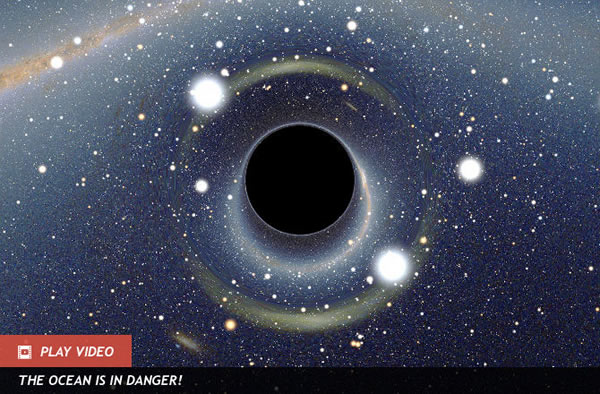Oceanic Black Holes Found in Southern Atlantic
Oceanic Black Holes Found in Southern Atlantic
Black holes are a tear in the fabric of space-time from which nothing escapes, not even light. They take on a mythic significance in popular culture as portals to alternate dimensions or grave threats to space travel. Astronomers are certain they exist out there in the universe, formed by the collapse of dead stars.
Now, physicists have found mathematical analogs to black holes here on Earth, specifically in the southern Atlantic Ocean where eddies whirl about. The work was posted to arXiv and reported first by the The Physics arXiv Blog.
The scientists describe the eddies using Edgar Allan Poe’s “A Descent into the Maelström”:
“The edge of the whirl was represented by a broad belt of gleaming spray; but no particle of this slipped into the mouth of the terrific funnel. . .”
That’s exactly how eddies look, the study says. A belt of spray encircles the whirlpool but the liquid does not fall in.
Similarly, black holes in space are encircled by photon (light) spheres, a region where the gravity is so strong (because of the density of the black hole) that it causes light to travel in an orbit. And there the photons remain, in precarious balance, neither falling into the hole or escaping. That’s similar to Poe’s description of the belt of spray around the Maelström.
And much like astronomical black holes, oceanic eddies exhibit singularity.
To locate these oceanic black holes, the scientists examined satellite images of the Agulhas Current in the Indian Ocean. The current travels along the east coast of Africa before turning back on itself in a loop. The loop occasionally pinches off and forms eddies that whirl off into the South Atlantic Ocean, remaining intact for more than three months.
The eddies are a coherent island of water in an otherwise turbulent ocean. As such, they “create moving oases for the marine food chain or even impact climate change through their long-range transport of salinity and temperature,” the study states. The eddies will capture any detritus floating nearby and swallow it, thereby transporting oil and garbage. And nothing within leaks out.
From Poe’s story again, a description of the his fictional Maelström:
“…whose interior, as far as the eye could fathom it, was a smooth, shining, and jet-black wall of water, inclined to the horizon at an angle of some forty-five degrees, speeding dizzily round and round with a swaying and sweltering motion, and sending forth to the winds an appalling voice, half shriek, half roar, such as not even the mighty cataract of Niagara ever lifts up in its agony to Heaven.”
Image: simulation of the distortions in space time caused by a black hole. Credit: Alain r.(Aug 20, 2013 12:09 PM ET // by Gayathri Vaidyanathan)












